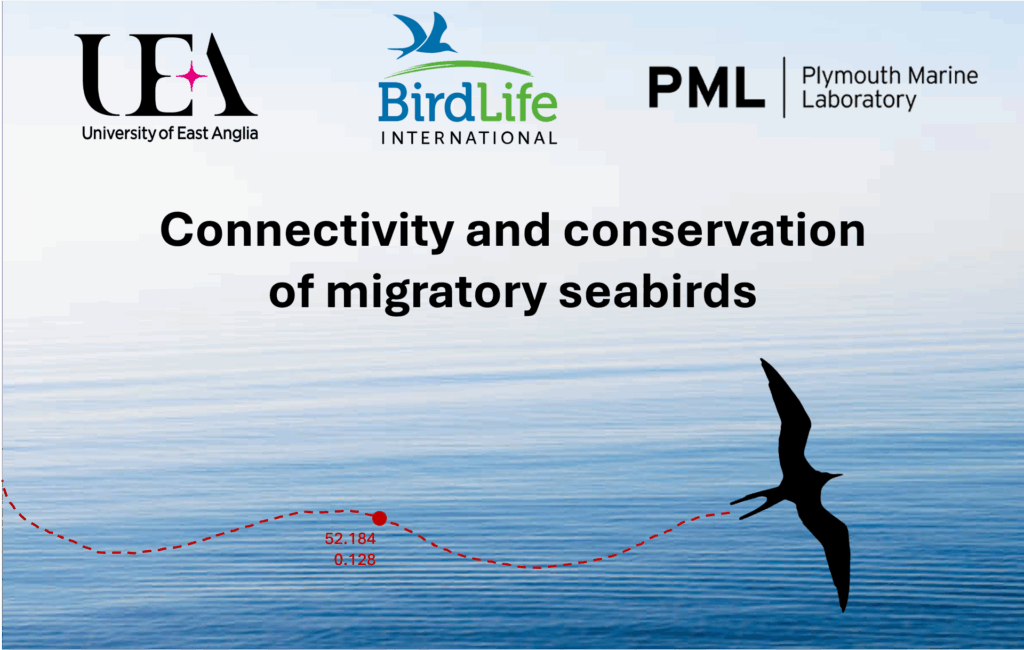Project Description
Supervisors
Dr Marius Somveille, School of Environmental Sciences, University of East Anglia
Dr Aldina Franco, School of Environmental Sciences, University of East Anglia
Dr Peter Miller, Plymouth Marine Laboratory

Scientific Background
Seabirds are highly mobile organisms connecting distant regions across the world’s oceans and seas. While being important contributors to marine ecosystems, seabirds are also particularly threatened by human activity. To design effective conservation strategies, it is crucial to know how seabirds connect marine sites through their movement along marine flyways. An understanding of such seabird flyway connectivity patterns is, however, sorely lacking. Which marine sites are most critical for migratory seabird conservation? Which populations are most exposed to anthropogenic threats throughout the annual cycle? How are environmental conditions shaping flyway connectivity?
Research Methodology
Benefitting from the strong expertise of the supervisory team in movement ecology and oceanography, the project will leverage large existing datasets on (i) the movement of migratory seabirds throughout their annual cycle, available via BirdLife’s Seabird Tracking Database (STD) which hosts >20,000 individual movement trajectories from >110 species worldwide, and (ii) the spatio-temporal dynamics of oceanographic conditions and fisheries.
You will address the following objectives, which will be developed and prioritised according to your interests.
– Mapping threats at sea: generate spatially- and temporally-explicit risk maps of anthropogenic threats to seabirds along marine flyways.
– Describe site connectivity along global flyways, using a global dataset of important areas for seabirds (i.e., Key Biodiversity Areas) and data from the STD.
– Investigate the drivers of flyway connectivity: adapting existing models of bird movement and migration to test hypotheses about the ecological processes shaping observed connectivity patterns.
– Identify species and populations that have the highest exposure to anthropogenic threats throughout their annual cycle.
Training
You will be part of a supportive and dynamic research environment at UEA and work with collaborators at BirdLife and the PML. You will receive hands-on training in spatial data analysis, while developing conceptual understanding and critical thinking in movement ecology, marine science and conservation. You will build strong interdisciplinary research skills in statistical analysis, data visualisation, advanced programming, writing and oral presentation, and receive training to enhance transferable skills and employability.
Person Specification
Enthusiastic individual with excellent communication skills and a keen interest for marine ecology and conservation. Experience of programming is desirable.
Acceptable first degree subjects: Bachelor’s degree in biology, environmental sciences or related discipline
Project code: SOMEVEILLE_UEA_ARIES26
